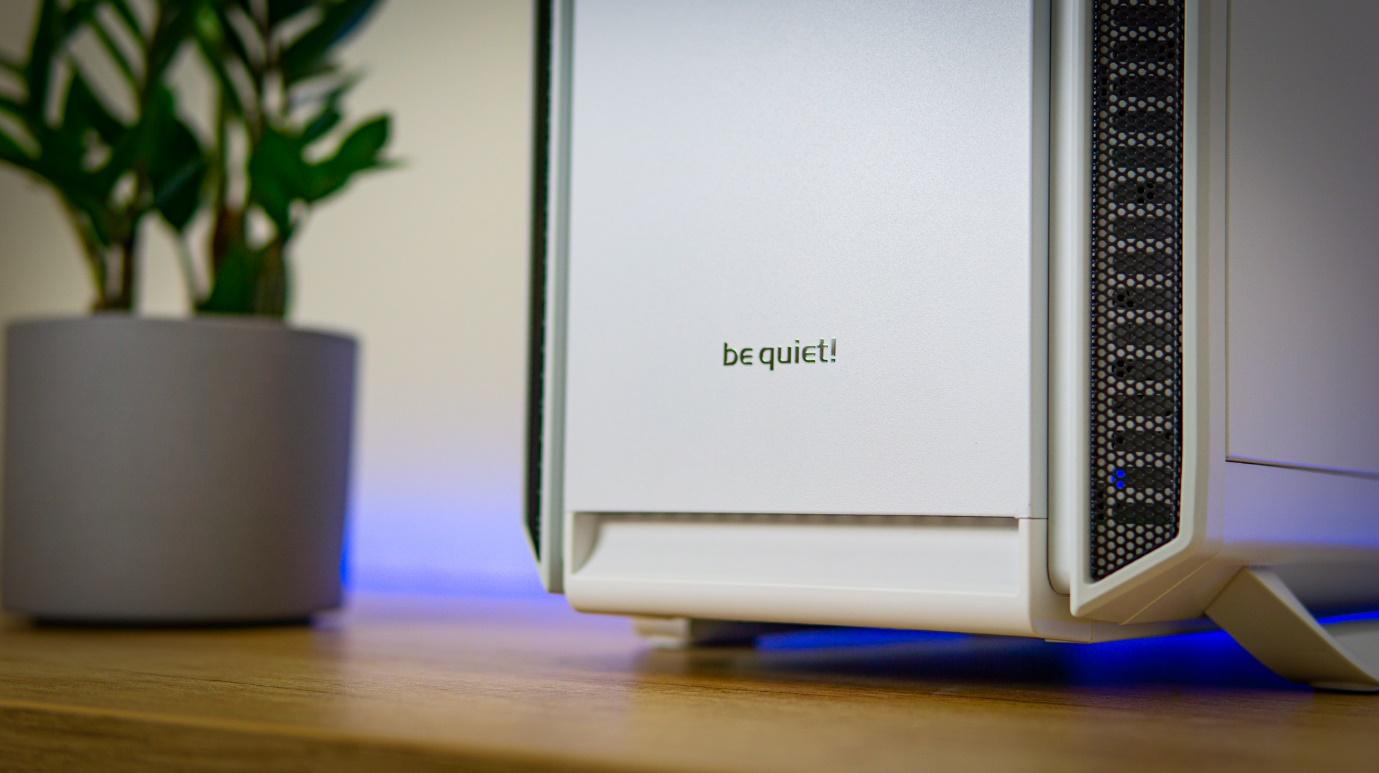Tom's Hardware Verdict
The be quiet! Silent Base 802 offers both a silence-optimized experience and a mesh front panel for when summer kicks in.
Pros
- +
Excellent interior design
- +
Silent.
- +
Minor thermal penalty for using dampened front panel
- +
Understated looks
- +
Easy panel and dust filter removal for maintenance
- +
Internals can be inverted
Cons
- -
Very big
- -
Cable management could use an update
- -
Mesh front feels like a copout
- -
Expensive for the material quality
Why you can trust Tom's Hardware
Although 2020 might have mesh-fronted cases dominating our Best PC Cases list, and be quiet! did indeed also introduce such a chassis earlier this year, the company isn’t straying from its roots entirely. The new Silent Base 802 chassis primarily focuses on silence above all else. But, with the avalanche of high-TDP components landing this year and the next, the update brings forth a welcome addition: an optional mesh intake and mesh top cover, to give the Silent Base 802 a little more cooling performance.
Indeed, if you’re not sure you can commit to a mesh chassis or a closed-front chassis, the Silent Base 802 might be just for you, packing both a damping front panel and a mesh front panel in its box. The silent front panel and side panels all come with thick damping material, which should lead to impressively quiet performance – this is staple be quiet! stuff we have here.
But, all that acoustic and thermal versatility doesn’t come cheap: The standard version we’re testing today costs $160, and if you tack on a tempered glass panel, the chassis will run you a steep $170. Let’s find out if it’s worth your money.
Specifications
| Type | Mid-Tower ATX |
| Motherboard Support | Mini-ITX, Micro-ATX, ATX, E-ATX |
| Dimensions (HxWxD) | 21.8 x 11.06 x 21.22 inches (553 x 281 x 539mm) |
| Max GPU Length | 17.0 inches, 11.3 w/ HDD cage (432 mm, 287 with HDD cage) |
| CPU Cooler Height | 7.3 inches (185 mm) |
| Max PSU Length | 11.34 inches (288 mm) |
| External Bays | ✗ |
| Internal Bays | 7x 3.5-inch (3 brackets included) |
| 3x 2.5-inch (3 brackets included) | |
| Expansion Slots | 7x + 2x Vertical |
| Front I/O | 2x USB 3.0, USB-C, 3.5 mm headphone, 3.5mm mic |
| Other | Optional Tempered Glass Panel, Fan Controller, Invertible Layout |
| Front Fans | 2x 140 mm (Up to 3x 140mm, 3x 120mm) |
| Rear Fans | 1x 140mm (Up to 1x 140mm) |
| Top Fans | None (Up to 3x 140mm) |
| Bottom Fans | Up to 2x 140 mm |
| Side Fans | ✗ |
| RGB | No |
| Damping | Yes, Lots |
External Tour
Normally, I would begin by touring around the outside of the chassis by describing its looks, but today I’m starting at a different place: the bottom. Why? Because be quiet! hasn’t mounted the feet on this chassis in its shipping box.



There’s a good reason for this: Once they’re clipped on, the case no longer fits in its box, so they have to come separate. That in itself isn’t a problem as they’re easy to clip on, but once they’re clipped on, the feet are challenging to remove. You can remove them with a flat screwdriver and a bit of violence via the inside of the chassis to get to the clips, but you will damage and scuff some of the internals in the process.




Following the foot attachment, the external tour reveals no major surprises. One thing to note is that the chassis is truly enormous (21.8 x 11.06 x 21.22 inches), and probably one you’ll want to keep under your desk. Of course, there is a simple reason for its size: all that padding and re-routing of air needs to happen somewhere, which in turn helps grow the case’s dimensions.

In white, I also find that it looks like something straight out of Portal, or the Citadel in Mass Effect. The chassis has this simplistic, elemental sci-fi vibe to it, which I quite like. Much like its acoustic intentions, the chassis also looks calm and quiet. “Are you still there?”
Get Tom's Hardware's best news and in-depth reviews, straight to your inbox.

You’ll spot the I/O at the top of the chassis, and it does come lavishly equipped. You get two USB 3.0 ports, individual headphone and mic jacks, power and reset switches, an HDD activity LED, a USB 3.2 Gen 2 USB Type-C port, and a fan controller with three speeds and a PWM mode that detects the signal from your motherboard.
Current page: Features and Specifications
Next Page Internal Layout, Cooling andNoise PaddingNiels Broekhuijsen is a Contributing Writer for Tom's Hardware US. He reviews cases, water cooling and pc builds.
